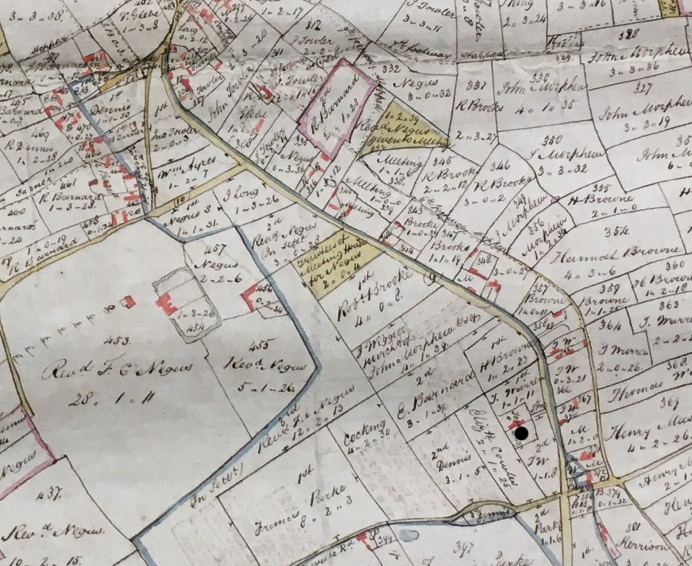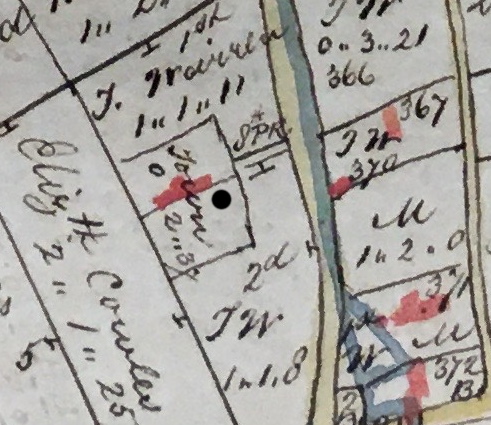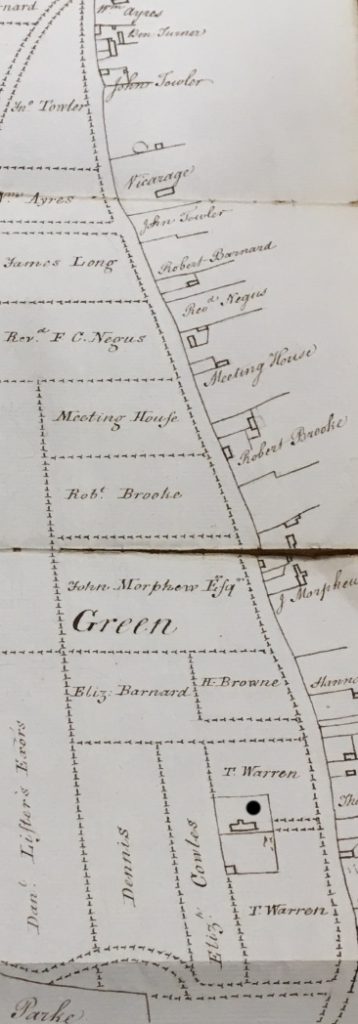Payment towards the Building of an Alms House
The ‘Town Books’ for Great Ellingham between 1740 and 1760 reveal that the Overseers of the Poor of the Parish of Great Ellingham were making annual payments for ‘Town Rents for the Poor’. These annual payments ranged from £10 7s. 6d in the year 1742, to £3 10s. 0d. for 1747 and £6 2s. 0d. for the year 1752. These sums were in addition to the amounts paid out to the needy and poor inhabitants of the parish to cover periods of hardship.
The Town Accounts for the year ending 1770, include the payment of £43 2s. 7½d. “towards the building of an Alms House“.
At the Town Meeting held on the 1st April, 1771, attended by many of the parishioners including Zachariah Browne, John Cole, James Turner, Simon Warren and Thomas Warren, the accounts for the previous year (ending 1770) submitted by Thomas King and John Barnard (the Churchwardens), James Barnard and William Hawkes (the Overseers of the Poor), Jeremiah Ellis and James Turner (the Surveyors) and Robert Brook and Daniel Lister (the Constables) were approved.
Was the Alms House built and, if so, where?
1769 Agreement for Leave & Consent
On the 2nd August, 1769, widow Margaretta Maria Colman, the Lady of the Manor of Ellingham Hall, (but then residing in Hurst, Berkshire), signed an Agreement for a Town House to be built in Great Ellingham on land owned by the Manor of Ellingham Hall.
Margaretta Colman was the widow of Fysher Colman and I believe that Fysher was, before his death in 1758, Lord of the Manor of Ellingham Hall. I also believe that Fysher and Margaretta Colman lived in Ellingham Hall. Memorials to Fysher and Margaretta Colman (and their young daughter) are in the Church of St James.
In the signed and sealed document “for a Townhouse” of 1769, Mrs. Colman agreed that the Churchwardens and Overseers of the Parish of Great Ellingham may erect, build and set up “convenient Houses of Dwelling for the impotent poor of the Parish” on “the lower part of a certain Common called Town Green” which was part of the Waste of the Manor of Ellingham Hall.
This land was said to be lying between Long Street Road on the east; Hurn Road on the west; the bank or fence that divides Town Green from the Common or Waste of the Manor of Ellingham Hall on the south and the other part of Town Green part of the north.
Margaretta Colman also agreed for the division and inclosure of a piece of land 110 yards in length and 22 yards in breadth (again of the Waste or Common of the Manor of Ellingham Hall), “for the better convenience of yards to such Dwelling Houses“.
c.1800 House & Garden held by the Overseers of the Poor
The Particulars and Valuation for Great Ellingham as taken by the Commissioners for the purpose of Inclosing the Commons, Common Fields and Waste Lands in the year 1800, lists a House and Garden held by the Overseers of Great Ellingham. The property comprised 2 roods and 37 perches and had a yearly value of £1 1s. 1d.
A House and Garden, again comprised of 2 roods and 37 perches referred to as Great Ellingham Town Land and held by the Overseers of the Poor, is listed in a Record of Impropriate Rectory Tithes which, although itself undated, appears to date between 1799 and 1842.


Extracts from 1802 Map of Great Ellingham. Original held at Norfolk Record Office. Russell James Colman Plans. Cat. Ref. C/Ca 1/84. With kind permission of NRO
A map of Great Ellingham dated 1802 referring to the (Inclosure) Award, shows an area to the west of Long Street marked “Town 0.2.37” (2 roods and 37 perches) with a building (indicated on the map by a black dot).

Extract from original 18th Century Map. Town Green, Hyrne and Broad Commons in Great Ellingham held at Norfolk Record Office. Cat. Ref. MC2213/113, 941X7. With kind permission of NRO.
Further, a late 18th century map of the Long Street area clearly shows the position of this building (indicated by a black dot).
In conclusion, the Town House was indeed built and it was in Long Street. However, following the Poor Law Act of 1834, the Town House was sold c.1836.
Some 90 years after the ‘Town House’ was sold, part of the land on which the Town House (or cottages) once stood, was sold by Thomas Wilkins to the then owner of White House Farm, James Sadd.
Sources:
1741-1775. Great Ellingham Town Book. Norfolk Record Office. PD609/37.
1769. Agreement re the building of houses for the poor. Leave and Consent Margaretta Maria Colman of Hurst in Berkshire, Lady of the Manor of Ellingham Hall, to the Churchwardens and Overseers of the Poor of Great Ellingham re the building of houses for the poor on land at Town Green, Great Ellingham. Norfolk Record Office. Catalogue Ref: MC 2213/214, 941X7
1799-1842. F W Horner, Records of the Surveyors to the Commissioners for Inclosure in Parishes in Norfolk and Suffolk. Great Ellingham (Act 1799). Norfolk Record Office. Catalogue Ref: BR 90/2
1800. Inclosure Commissioner’s Particulars and Valuation. Great Ellingham. Norfolk Record Office. Catalogue Ref: MC 2213/119, 941X7
18th Century. Maps. Town Green, Hyrne and Broad Commons in Great Ellingham. Norfolk Record Office. Catalogue Ref: MC 2213/113, 941×7. Russell James Colman Plans. Norfolk Record Office. Catalogue Ref: C/Ca 1/84
Monumental Inscriptions. Great Ellingham Parish Church.